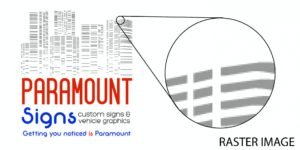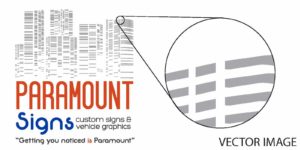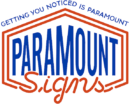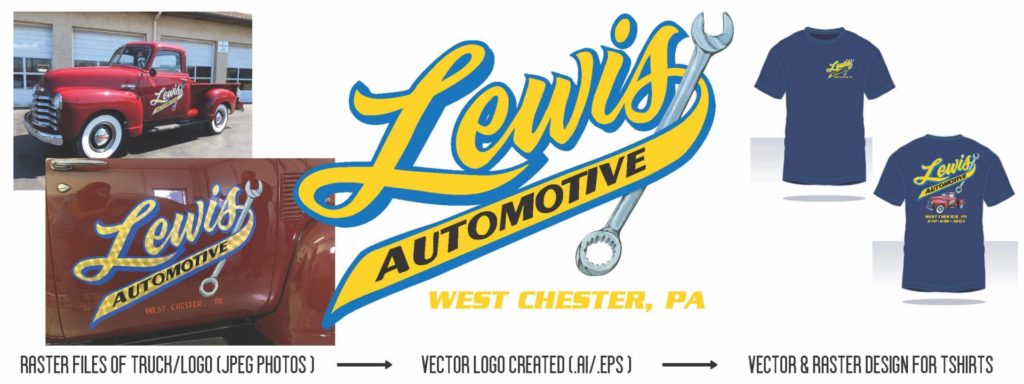When looking for help with graphic design, your designer will want to see any content you already have developed. Any art from your logo, branding guides, or even images of inspiration serves a valuable purpose in the design process. That said, when existing businesses provide their logo file for production too often the file cannot actually serve its purpose.
An experienced designer creates logos and branding information in an application that creates vector images. This allows the user to scale the image without affecting the resolution.
There is another format that designers may use called Raster. This format is used for digital cameras and printed materials and is limited in scalability. So why doesn’t everyone create and use vector art? Each format has its own purpose and it’s important to know when to use each type of format.
Table of Contents
What is a Raster Image?

There is another format that designers may use called Raster. This format is used for digital cameras and printed materials and is limited in scalability. So why doesn’t everyone create and use vector art? Each format has its own purpose and it’s important to know when to use each type of format.

The Basics of Raster Files:
Pixel composition makes it device-dependent with limited scalability
Large file size (in order to have high enough resolution)
Good for Photography and some print materials
File formats: .BMP, .GIF, .JPG, .PNG, .TIFF
What is a Vector Image?

Ultimately, when it comes to logo files, sign designs, and other materials for large-scale printing vector formats are desired.

The Basics of Vector Files:
Infinitely scalable format
Small file size
Good for: Fonts, Logos, Signage, Large format printing
File Formats: .EPS, .SVG, .AI
We hope this article has provided some insight into the file types and applications so that you can make sure you acquire the appropriate file types for your business marketing and advertising assets.
But, not to worry if you do not have the appropriate file type. Paramount Signs offers design services that can produce stunning designs in the appropriate formats for their intended use.
We want to make the process streamlined and simple. If you have any questions about what type of file you have, if it is the appropriate style or anything else, feel free to contact us and we can walk you through it!

